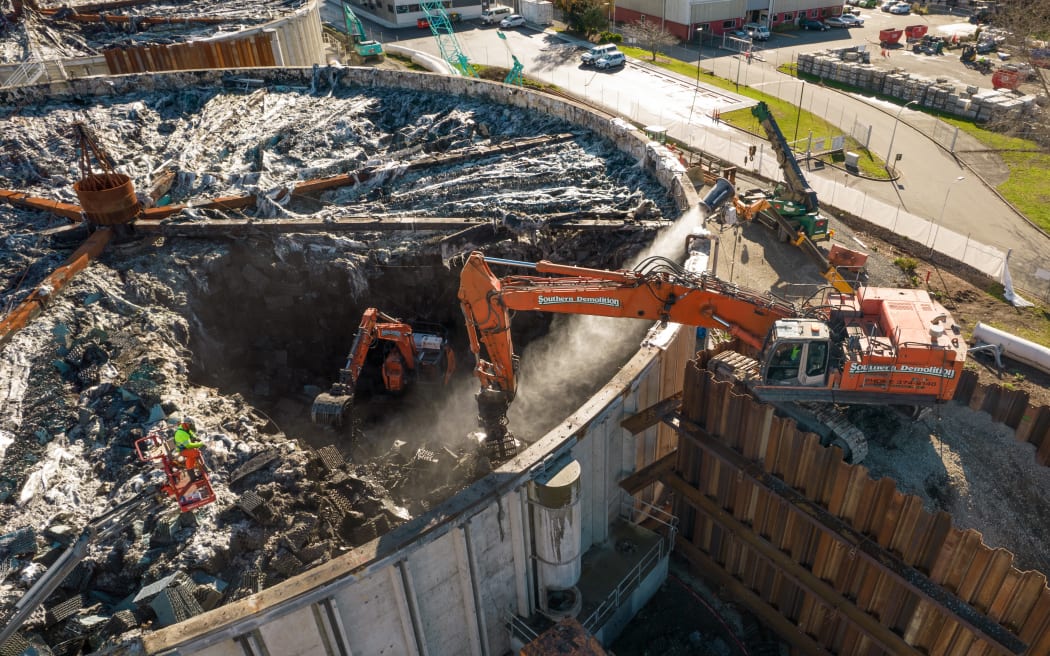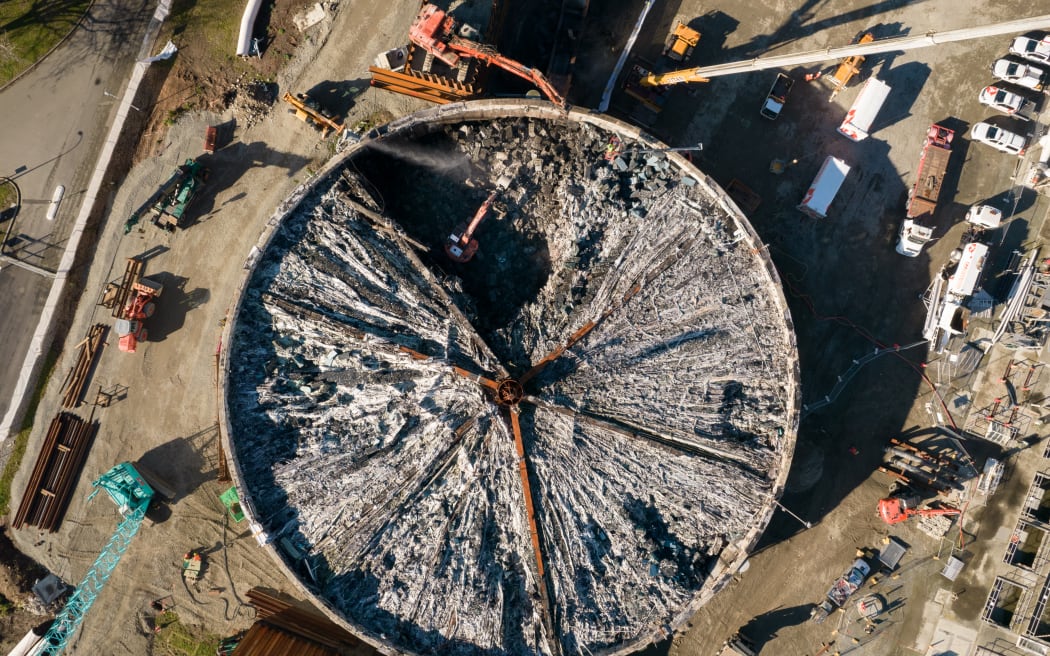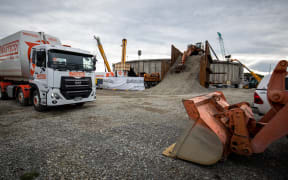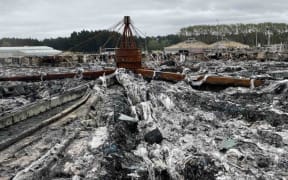
The fire broke out in November last year when contractors were working on the roof of one of the trickling tanks. Photo:
Christchurch's devastating wastewater treatment plant fire most likely started when contractors accidentally ignited maintenance tape or the fibreglass roof of one of the trickling tanks with a heating tool, an investigation has found.
The report, by Fire and Emergency New Zealand specialist investigator Bruce Irvine, noted investigators have been unable to determine exactly how the blaze broke out because Goleman Group contractors have declined to be interviewed.
"The fire cause has been classified as accidental with the most likely cause being the ignition of the maintenance tape 'Sika MultiSeal' or roof structure with an open flame heating tool in use at the time," the report found.
Irvine sent an email to Goleman Group and the company's lawyers requesting an opportunity to interview the staff involved, but has not been able to speak to them or the first 111 caller.
"An investigation was started on the day of the fire and occurred over a prolonged period," Irvine said. "To date these staff have not been made available for an interview."
Instead, the investigation relied on witness interviews and the transcript of the first 111 caller supplied by police.
The blaze broke out at the Christchurch City Council-run plant on 1 November last year, spreading between the tanks through a fibreglass ventilation pipe.
Investigators did not find an open flame-type tool in the debris because of the extent of the damage.
Maintenance work on the roof had been underway for months, including cleaning, painting and applying a seal tape to the connections between fibreglass roofing segments that formed the dome structure, the report said.
Goleman Group chief executive Joel Matsis said two of the company's senior workers were waterproofing and painting the domes when the fire broke out.
"When the fire broke out they managed to narrowly escape the blaze. They warned others and tried to extinguish the flames, suffering minor burns," he said.
"We fully back our employees' view that they did not cause the fire to break out.
"We did make our employees available to the investigators. They [the employees] were offered independent legal advice and having received it, they declined to be interviewed as they are entitled to do. We were not privy to the advice or their communications with FENZ."
Matsis said Goleman Group took workplace health and safety seriously and was proud of the actions of its employees.
"There are many structural issues surrounding the wastewater plant which was seriously damaged in the Christchurch earthquakes. The council has attempted to repair it but there remain many health and safety concerns," he said.

The burnt-out plant viewed from above. Photo: Christchurch City Council
The report, released to RNZ under the Official Information Act, said the "hot works" section of the permit had been crossed out and was not identified in the job hazard assessment provided by Goleman Group.
"No 'hot works' were to be undertaken in the process of applying the sealing tape," the report said.
A box of tape was found by one of the investigators near the stairway connecting the tanks.
"The cause of this fire is believed to be the accidental ignition of the roof structure whilst the application of Sika MultiSeal tape was being undertaken as part of the work contracted to Goleman Group Ltd," the report concluded.
The weather at the time of the fire and the operation of the trickling tanks during the roof maintenance were ruled out as possible causes.
Irvine said the possibility of a deliberately-lit fire had also been discounted "due to the immediate actions of the staff in the area of ignition, in attempting to use an extinguisher to suppress the fire".
The stench from the burnt-out treatment plant badly affected the health of people living nearby for months, who complained of nausea, headaches, worsening asthma and sleepless nights.
The city council offered financial compensation for those worst affected.
Christchurch City Council infrastructure and regulatory services general manager Jane Davis declined to comment because staff had not had time to fully consider the fire investigation report's findings.
The council's own investigation was ongoing, she said.




